Clip Studio Paint Frame Edge Cant Draw
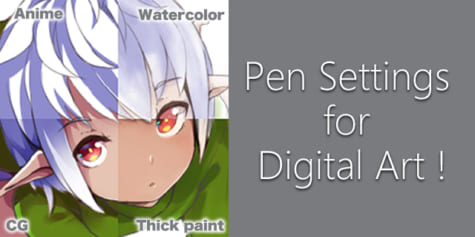
In this tutorial for beginners, designer/illustrator Sin:cK introduces some recommended pen and castor settings for different fine art styles, including watercolor, thick pigment, anime cel shading, and CG illustrations!
Until you lot go used to digital painting, y'all might be wondering how to set upward your pen and castor tools for a item painting style.
I'll introduce some brush settings that I employ for different painting styles.
Pen and castor settings differ depending on the software. In this tutorial, I will use Clip Studio Paint and SAI as an example.
Basic pen settings
Since Clip Studio Paint has then many customizable pen settings, it can accept a long time to understand every single feature.
In this tutorial, I'll innovate some of the virtually useful features.
Hither'south an overview of the different pen settings.
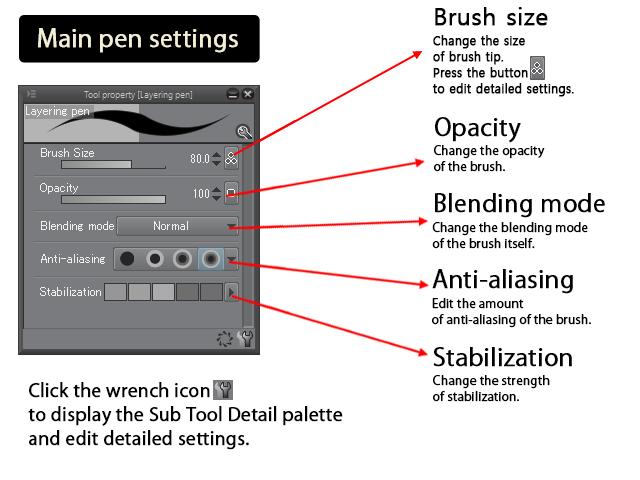
Castor size
Alter this value to alter the castor size.
Click the button at the correct to edit the pen pressure level settings.
Opacity
Irresolute this value affects the transparency of the brush itself.
Blending mode
Change the castor's blending mode.
This feature is similar to blending modes for layers, merely with some extra settings such equally "Delete" and "Background" which are unique to castor settings.
Anti-aliasing
Anti-aliasing smoothens the drawn line to avoid jagged lines. Y'all can choose from iv strengths of anti-aliasing.
Stabilization
Alter the amount of stabilization.
Now, I will explain various ways of painting and the pen settings I use.
Anime painting

The main feature of anime painting is sharp boundaries.
This method mainly uses solid fill, so I will use my customized line art pen and painting pen to create my analogy.
Clip Studio Paint pen/brush settings
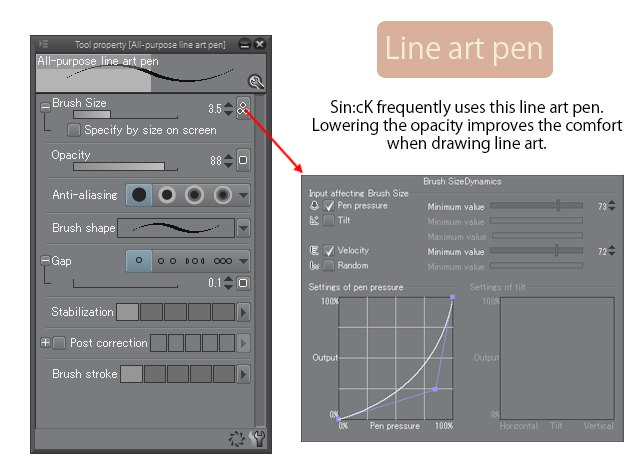
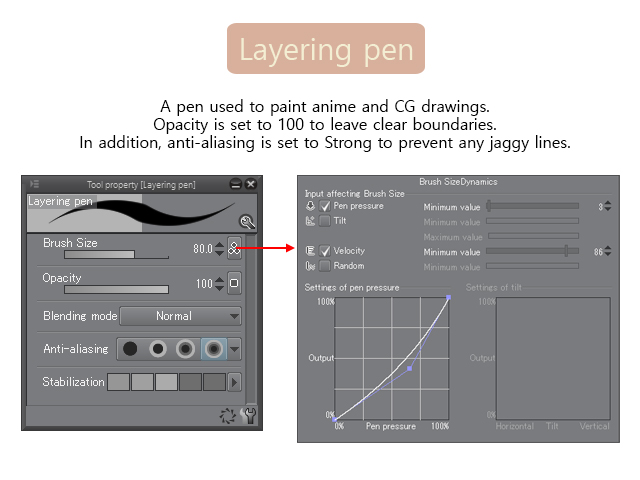
SAI pen/castor settings
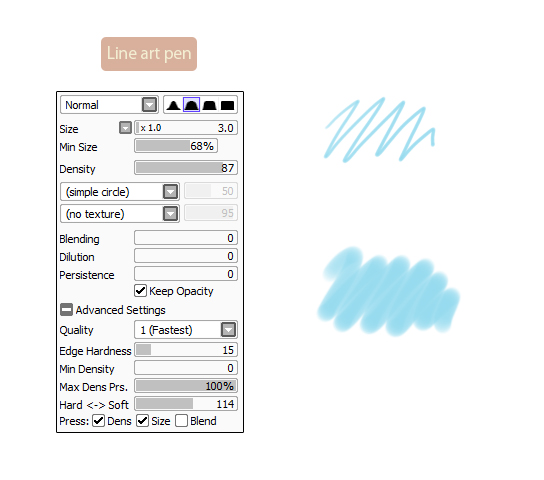
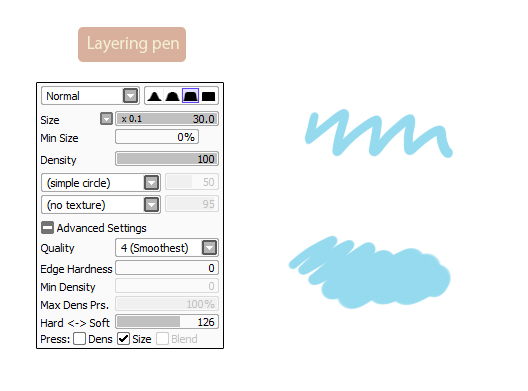
P ainting steps
The steps for anime-style cel shading are equally follows:
(ane) Fill the line fine art using the bucket tool.
(ii) Create another layer above the base color layer and prune to the fill layer.
(iii) On the clipped layer, utilise the painting pen to paint the shadows. I recommend you to chose a shadow color with the aforementioned luminosity every bit the base colour, as it will make the analogy look neater.
CG painting
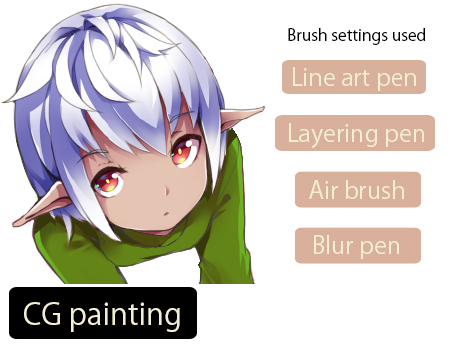
CG painting, besides chosen "2DCG" is a Japanese style of painting that is like a more than detailed version of anime-manner painting.
Use tools such as the airbrush and blur pen afterward anime-style painting to achieve this effect.
I created the higher up analogy using the line fine art pen, painting pen, air brush, and blur pen.
Clip Studio Paint brush/pen settings
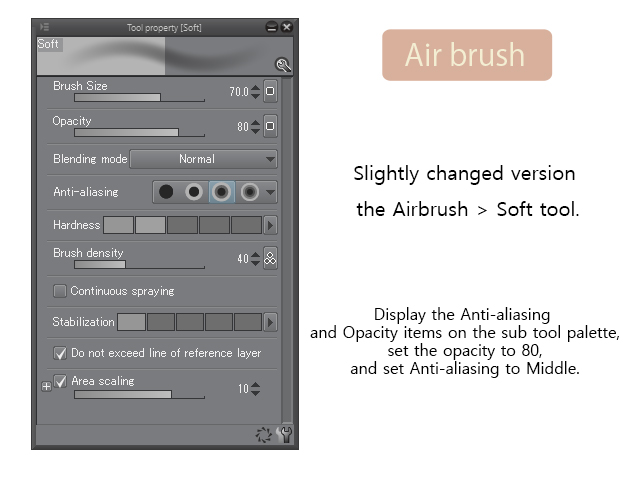
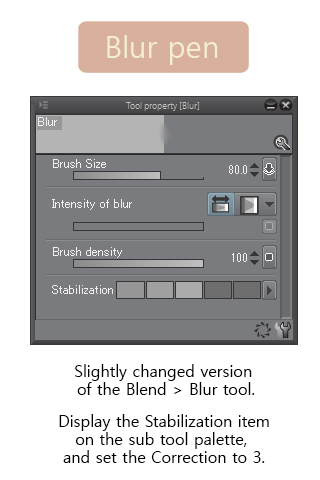
SAI brush/pen settings
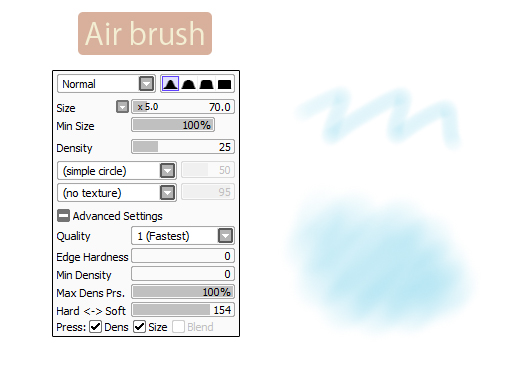
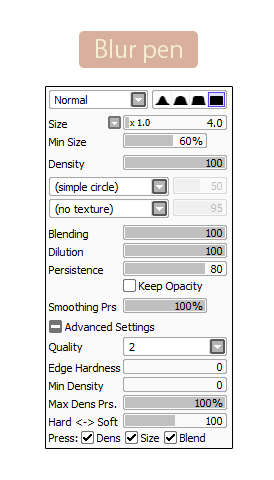
Painting steps
The steps for CG painting are as follows:
(1) Use the same layer construction as anime-style painting. Select the layer with the shadow, and remove the precipitous edges of the shadows with the airbrush and blur pen.
(2) Create a multiply layer above, and paint some gradients with the airbrush.
(iii) Create another multiply layer above, and paint in darker shadows using the painting pen. Then, go along to smooth out the edges of the shadows.
(four) Create an overlay layer above and adjust the overall colour. Apply screen layers if necessary.
Watercolor painting
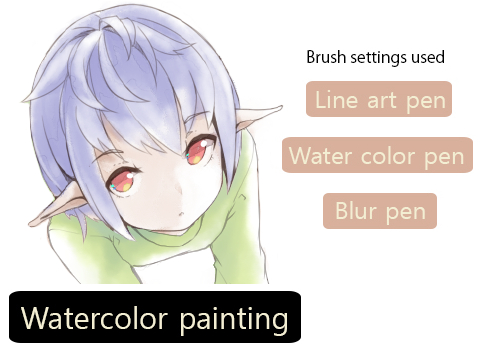
The faint colors of watercolor painting create the result of traditional painting. In order to create this natural upshot, I apply brushes with a watercolor border and texture added.
In addition, yous can also add a paper-similar texture using the Overlay" or Multiply blending modes at the top of the layer palette to add the the traditional effect.
I used the following watercolor pen.
Clip Studio Pigment pen/brush settings
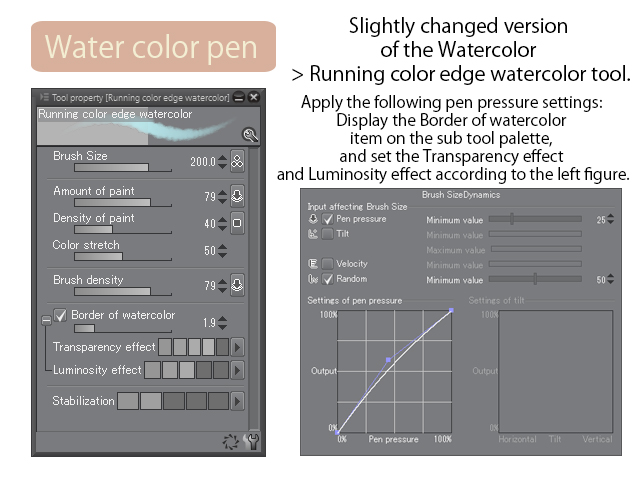
SAI pen/brush settings
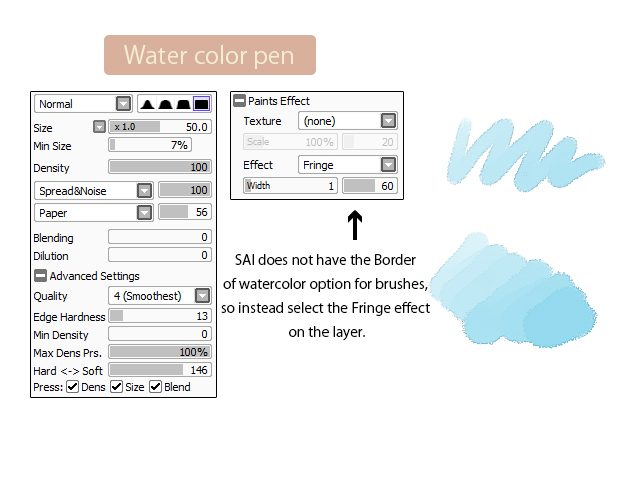
Painting steps
The steps for watercolor painting are every bit follows:
(ane) Pigment roughly using the watercolor pen. Leave some of the white base colour to make information technology expect like watercolor painting.
(ii) Then, create a layer above and utilize the airbrush to paint white colour. It's all-time to avoid painting too much white.
(3) Echo steps i and 2 to adjust the entire illustration. Create an overlay layer above and adjust the saturation.
(iv) In guild to strengthen the traditional outcome, add a layer on top with a texture set to Screen or Overlay.
Thick painting
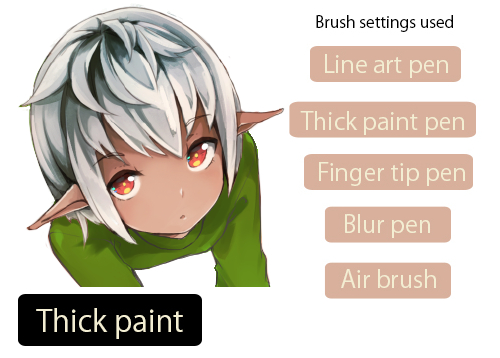
Thick painting creates a 3-dimensional consequence by painting repeatedly with thick paint brushes and smudging brushes.
This case uses line art, merely some painting styles don't need any line art.
Prune Studio Paint pen/brush settings
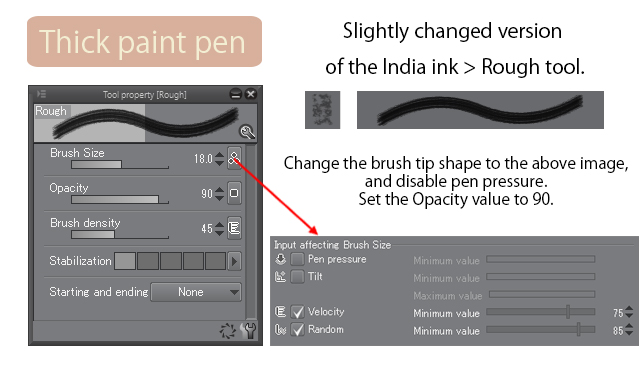
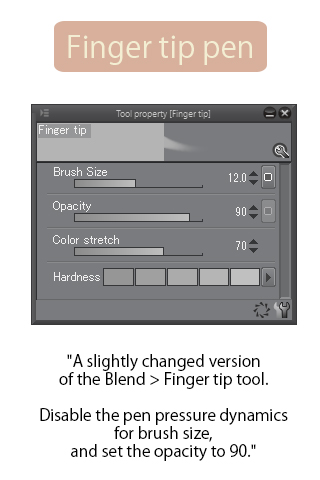
SAI pen/castor settings
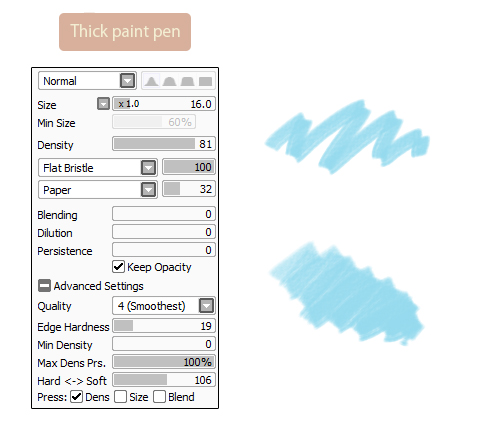
Painting steps
The steps for thick painting are as follows:
(1) Prepare the line fine art (if needed).
(2) Use the thick paint pen to pigment roughly. In dissimilarity to watercolor painting, avoid leaving whatsoever white parts.
(3) On the same layer, use the thick paint pen to paint darker colors.
(4) Then, utilize the finger tip pen and mistiness pen to polish the boundaries between colors while leaving the drawing marks.
(5) Echo steps 2 to iv. As a last adjustment, create a multiply layer and overlay layer above, and use the airbrush to create an overall gradient.
Was this tutorial useful?
There is a high degree of freedom with pen settings, so you can change the settings as you similar.
I listed some examples of pen settings, but feel gratuitous to adjust these settings to create the perfect tools for you!.
Adjusting the pen settings is a skilful mode to find the all-time tools for your art style.
System/Words/Illustration: Sin:cK (Homepage → https://sinckbox.wixsite.com/domicile)
mcintoshfichan1948.blogspot.com
Source: https://www.clipstudio.net/how-to-draw/archives/154262
0 Response to "Clip Studio Paint Frame Edge Cant Draw"
Post a Comment